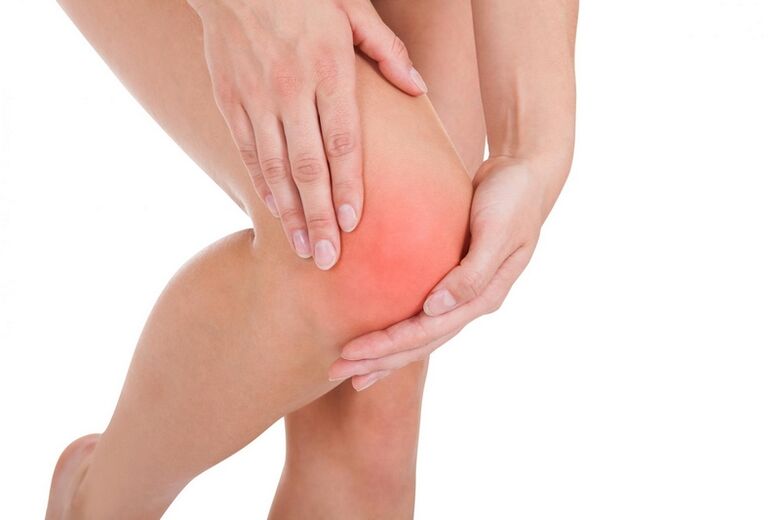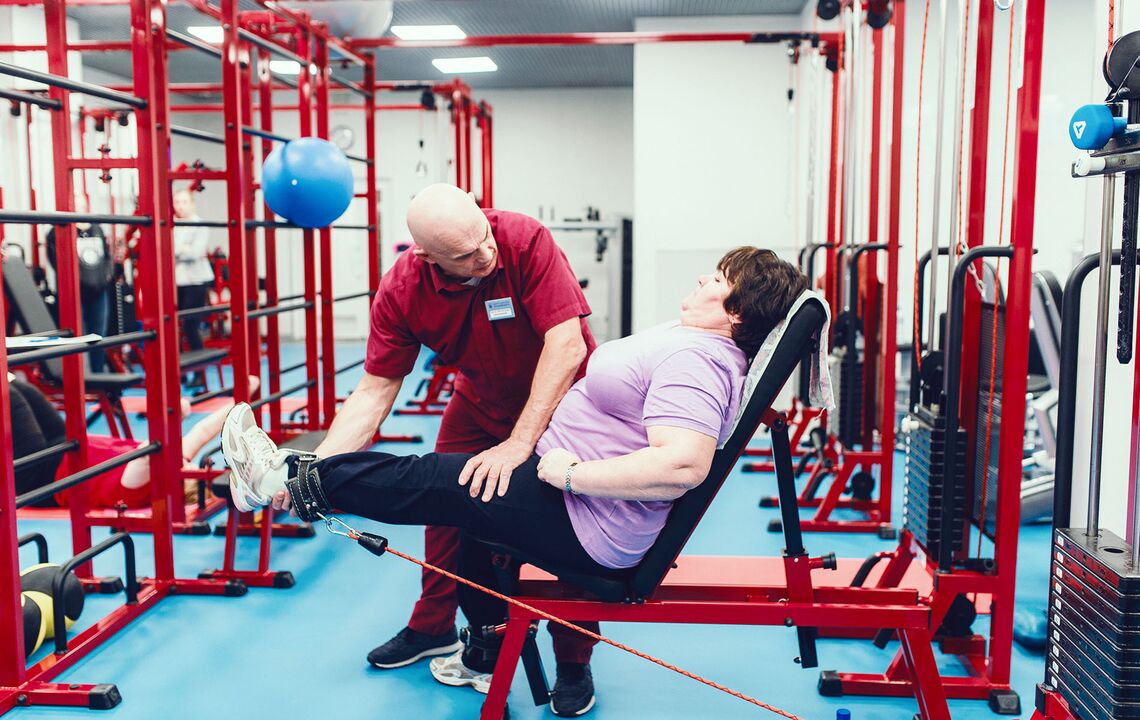Osteoarthritis of the knee joint is one of the most common diseases of the muscle system and, unfortunately, the most common cause of mobility, disability and sometimes disability.In the case of arthrosis, the cartilage that involves the joint surface is irreversibly affected, which stops the joint due to proper work and pain.
The disease is officially referred to as "osteoarthritis deformer";Another name is gonarthrosis (the ancient Greek "Goni" - knee).The knee joints are the largest joints of the human body and are most often affected by osteoarthritis.Less often, the disease affects the joints of the hips and ankles.
How does gonarthrosis occur?
Usually a healthy cartilage is elastic and smooth, completely covering the bone moving areas and allows them to slip.The cartilage also softens the stress that the bones receive when walking or exercise.

When the cartilage is destroyed (so the arthrosis is manifested), the upper layer of this elastic fabric becomes thinner.Occasionally, the beak cut, tears appear - so the joint loses the main "shock absorber" and "bearing".The bones begin to rub with each other, the joint is swollen, gradually loses its normal appearance, and pain appears.
Causes of gonarthrosis and risk factors
Osteoarthritis deformans are more common in older, overweight women, but this does not mean that young and physically active people do not suffer from this pathology.The development of the disease is sometimes provoked by heavy physical work or excessive stress in the gym.
Here is a far -so not a complete list of the causes of the arthrosis of the knee joint:
- Sports damage - meniscal injuries, fractures and dislocations;
- inflammatory processes in joints and concomitant diseases;
- Metabolic disorders - some diseases lead to intraarticular deposits;
- excessive stress of the joint, including long -term position or physical work related to heavy rise;
- The uneven loads of the joints due to the curvature of the legs - the arthrosis manifests itself faster in the overloaded areas.
It depends very dependent on the genes - man can have a hereditary willingness to arthrosis of the knee joints.In such people, the gene responsible for the development and stability of cartilage tissue is interrupted.
Many factors increase the risk of gonarthrosis:
- Increased body weight.Due to the increasing load of the joint, the cartilage tissue is worn faster;
- Age over 40 years of age.Most people of this age reduced exercise.Due to physical inactivity, muscle atrophy, weak muscle tissue does not properly provide joints and the risk of cartilage damage is increased.
Joint symptoms
The osteoarthritis of the knee joint is not a disease that may appear suddenly.This makes it clear ahead: it all starts with a little knee pain when walking.Pain may increase when or down the stairs.As a general rule, the knee is painful at the beginning of movement, then the pain disappears and returns again with the longer load of the joint.
If you ignore these symptoms and do not consult your doctor about them, the disease will develop.Then the pain changes from the continuous pass, the knee will hurt even more than relaxation and swell.When the cartilage deteriorates, the mobility of the entire joint will be limited.
Some people notice that the knee is "reacting" to weather changes.This really happens - the nerve endings of the joint capsule are sensitive to changes in atmospheric pressure.
The following symptoms are characterized by gonarthrosis:
- knee pain while moving and walking;
- Morning stiffness in the knee joint if the range of motion is minimal;
- swelling of the knee;
- Dry and coarse crunchy sound in the exercise - this sound occurs due to friction of the joint surfaces.
As the disease progresses, the symptoms change:
- The pain is even disturbed even at rest;
- The joint is deformed and loses its functions;
- Due to the deformation of the knee, walking changes.
Gonarthrosis
There are 3 stages of the arthrosis of the knee joint.
Grade 1Disease - almost asymptomatic.It begins with the first manifestations of the disease - for example, almost painless, such as fatigue in the legs - and lasts until the first bone deformation appears.If the knee has changed its shape due to synovitis - that is, the accumulation of fluid in the joint, but the intraarticular cartilage is not damaged, the disease is still in Stage 1.

Grade 2It is characterized by gradual changes in bone tissue.Externally, the knee looks the same as in section 1 - deformed and increased.The pain increases: in addition to incoming pain during movement, the crepitus of the affected knee is also added.The joint becomes less moving, it will be difficult to squat and walk on uneven surfaces.
Grade 3The degree of gonarthrosis is the most painful.At this stage, there is almost no cartilage tissue, and if the disease is severe, the bones can grow together.Then the joint is completely immobilized and the person should only move with a crutch or stick.Generally at this point, doctors judge the endoprostanism of the injured joint.
IMPORTANT: Only one doctor can determine the degree of precise development of the disease.Occasionally mild symptoms, the disease severely affects the cartilage membrane - so further tests are usually performed for accurate diagnosis:
- Radiography -find out that the cartilage surfaces are deformed and in what condition is the common space;
- CT or MRI - for more detailed examinations.
How is gonarthrosis diagnosed and treated?
The first thing you need to remember is that timely diagnosis and early treatment promote the disease at the very beginning.Therefore, the appearance of the first inconvenience in the knee joint is a good reason to visit the doctor and participate in examination.
Doctors are not only diagnosed with osteoarthritis based on medical history, complaints and the current condition of the knee joint.The results of complementary studies also play an important role - they are often written to clarify the stage of gonarthosis and the severity of the disease.
Doctors generally prescribe it to accurately diagnose the arthrosis of the knee joint:
- Radiography.When abnormal processes have begun in the knee - such as calcium crystals or bone tumors' deposits have appeared in the joint capsule - these changes can be seen in the photos.Doctors most often prescribe X -rays, but without a thorough examination of the knee joint, the image is incomplete;
- Ultrasound - can be used to assess the condition of the joint surrounding and attractive soft tissues.Ultrasound complements the results of radiography, so the doctor is visible not only in bone structures but also in tissues;
- MRI - magnetic resonance imaging.MRI is prescribed for complaints about knee pain if the doctor suspects that meniscus, leagues or tendons are suspected;
- Arthroscopy is an invasive study in which the joint cavity is tested with the help of a camera.The cameras are placed on the skin through a small incision;Through the same incisions, doctors can perform minor manipulations - for example, remove a piece of destroyed cartilage, partially smooth the unevenness in the cartilage, and so on.
Arthrosis is usually treated with medication, primarily to relieve pain, improve joint mobility and restore the ability to move.Arthrosis causes irreversible changes in cartilage tissue - so it is impossible to talk about complete cure.But we can stop the progress of the disease - so we can slow down further tissue destruction.
This is what the usual treatment of gonarthrosis looks like:
- Local cures - spots, creams, ointments and gels;
- painkillers;
- Anti -inflammatory drugs, especially non -steroids.Their use is considered to be the "gold standard" of medicine, but such drugs destroy the gastric mucosa;
- Blockades and Chondroprotectors - drugs that appear only after long use;
- Rarely - physiotherapy and sanatorium treatment.
There are recommendations for wearing orthopedic knee pads to support joint and reduce pain.But all the methods listed above are the methods of passive effects for joint function.
This treatment relieves only a few symptoms - neutralizes pain, inhibits inflammatory processes, etc.In the final stages of osteoarthritis, one loses not only working capacity but also the ability to move.In such cases, the joint should be protected - that is, inserting an artificial structure into the knee.Such surgical intervention does not pass without leaving a trace and introduces its own limitations - and therefore reduces the quality of life.
The methods of influencing active effects have a completely different effect when the body's own resources restore the sound of the muscles, which provide blood and nutrients.Such treatment is most effective when done under the supervision of trained and experienced doctors.
Treatment of gonarthrosis with appointments
KineseraPy, that is, motion therapy activates the body's own forces.Properly selected load allows the necessary muscles to function effectively and improve the condition of the joints and cartilage by reinforcing the muscle coating.
Kinin -natherapy treatment begins with a thorough examination and necessarily myofascial testing.Kinsanapist examines the condition of the sore knee and analyzes the condition of muscle tissue, tendons and ligaments.Taking into account the data of ultrasound, CT, MRI and radiography, we determine the degree of gonarthrosis and the therapeutic exercises program will be completed.
The classes are carried out on a multifunctional simulator - a patented simulator with a special design.Exercises are carried out in such a way that they avoid excessive stress of the joint and operate only on the muscles that need to be strengthened and developed.In the initial stages, patients are prescribed by ground joint gymnastics - this is made up of exercises on a carpet without weight.
The therapeutic effect of kininopia is provided by the restoration of blood microcirculation and the right lymphatic drainage.The cartilage receives more food, the development of arthrosis slows down to a complete shutdown, and the biomechanics of the joint joint is completely restored.
Serious illness such as knee joints is not ignored.The best way to prevent a healthy lifestyle is a balanced diet, physical activity.But if the joint problems have begun, do not wait for serious warning signs - the first symptoms should seek the help of qualified doctors.


























